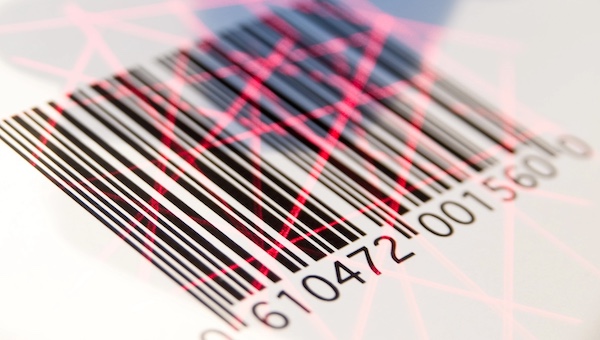
ASSALVE/GETTY IMAGES
HAPPY 50TH BIRTHDAY TO THE BARCODE
BY: SAM KLEBANOVORIGINAL SITE: MORNING BREW
The ubiquitous symbol turbocharged retail efficiency but it might be on the decline.
This week marks 50 years since commerce met the barcode, a visual symbol whose impact on business has been far more than symbolic. It all started with a red flash in an Ohio supermarket when a pack of Juicy Fruit gum became the first grocery item ever to be scanned via barcode on June 26, 1974.
The beep heard ’round the world ushered in a new era of streamlined transactions and inventory management that have made modern retail efficient. To this day, what is officially called the Universal Product Code (UPC) allows stores to carry thousands of products and quickly identify them in their digital system.
Here is the story of how the barcode became the ID symbol for everything from candy bars to newborn babies…and why its demise might be near.
How do they work?
The barcode’s genius lies in its ability to encode information with simplistic elegance.
- The lines of varying width correspond to numbers, forming a 12-digit code that signifies the product’s name and manufacturer.
- A laser scanner detects how light is absorbed into the black lines on a white background and conveys the information to a computer.
Barcode backstory
Using scannable lines to encode information was a concept first devised by engineers Joseph Woodland and Bernard Silver, who patented the tech in 1949. But their brainchild didn’t gain traction until after the invention of the laser for easy scanning.
In 1971, grocery chains assembled a committee to find a compact, printable symbol that the industry could widely adopt to speed up the checkout process.
- Woodland’s and Silver’s concept, a design with concentric circles, was the front-runner until IBM swooped in with a last-minute submission.
- IBM proposed the rectangular barcode we know today, which had a lower error rate and was even endorsed by Woodland as superior to his own.
This quickly became a global industry standard, ensuring the barcode’s enduring relevance. In the decades that followed, the barcode enabled inventories to swell to thousands of items as stores did away with physical price tags and manual records.
But is the barcode in its dying throes?
Despite its ubiquity, the barcode is at risk of being made obsolete by its more sophisticated cousin: the QR code. The patterned squares you begrudgingly scan for restaurant menus can hold more encoded product information.
AWFSM CATEGORIES
Activism | AI | Belief | Big Pharma | Conspiracy | Cult | Culture | Deep State | Economy | Education | Entertainment | Environment | Faith | Global | Government | Health | Hi Tech | Leadership | Politics | Prophecy | Science | Security | Social Climate | Universe | War
